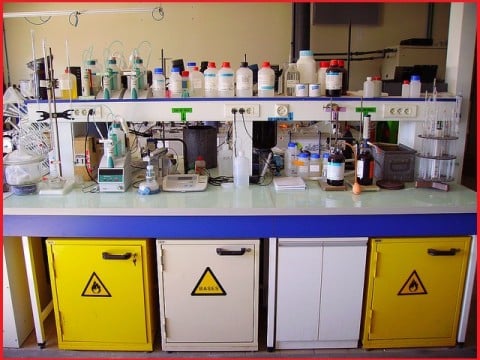 “Why Everything You Know is Wrong.” Once in a while, Childhood Obesity News puts up a post with some variation of that title. Of course, everything we know isn’t wrong–but how do we know? How can we be sure? As Dr. David Katz (who has been a Childhood Obesity News guest blogger) says, we are “under constant assault by distorted, contorted, titillating, and insipid headlines.” Assailed by the multitude of “facts” that fly at us from every media outlet, on every possible subject, how can the average person sort the wheat from the chaff?
“Why Everything You Know is Wrong.” Once in a while, Childhood Obesity News puts up a post with some variation of that title. Of course, everything we know isn’t wrong–but how do we know? How can we be sure? As Dr. David Katz (who has been a Childhood Obesity News guest blogger) says, we are “under constant assault by distorted, contorted, titillating, and insipid headlines.” Assailed by the multitude of “facts” that fly at us from every media outlet, on every possible subject, how can the average person sort the wheat from the chaff?
Dr. Katz is the director of the Yale Prevention Research Center and editor-in-chief of the journal Childhood Obesity. With such an academic background, one of his pet peeves is the blog that refers to another blog, which traces back to another blog, and so on, without ever referencing the original source.
He offers some hints for avoiding the “Everything is Wrong” Syndrome. One is to recognize hyperbole when we see it. What is hyperbole? Intentional and obvious overstatement, embellishment, embroidery—in other words, over-the-topness. We can train ourselves to prefer illumination over titillation, which in many cases requires nothing more than applying common sense. Dr. Katz says:
If you only read headlines, just about everything you think you know will be wrong…
Remember there were equally credible (or incredible) headlines last week, saying the opposite…
“Trust, but verify,” is how The Economist summarizes the scientific process. One of the first rules of scientific exploration is that an experiment must be repeatable by another scientist using the same protocol. This provides a chance for a shoddily-designed experiment or a fallacious analysis to be identified and, hopefully, corrected.
The reporter for The Economist reveals that venture capitalists in the biotechnology field operate by a rule of thumb that at least half of published research can’t be replicated. When you consider that there are now, in the world, between 6 and 7 million active researchers, that adds up to a lot of dubious findings and unverifiable results. But knowing what is false is just as important as knowing what is true. It really gets serious when people’s lives are at stake:
In 2000-10 [sic] roughly 80,000 patients took part in clinical trials based on research that was later retracted because of mistakes or improprieties.
Things have come to such a pass that feisty, Glasgow-based general practitioner Des Spence declares “evidence-based medicine is broken.” Mainly, this is because the pharmaceutical industry funds much research, a circumstance that provides much potential for chicanery. Spence notes:
Corruption in clinical research is sponsored by billion dollar marketing razzmatazz and promotion passed off as postgraduate education… Today EBM is a loaded gun at clinicians’ heads. “You better do as the evidence says,” it hisses, leaving no room for discretion or judgment. EBM is now the problem, fueling over-diagnosis and over-treatment.
University of Leeds researcher Prof. Patricia McKinney once wrote a notably significant sentence. Her topic (a concurrence of toxoplasmosis and brain cancer) was very different from childhood obesity, but this elegantly phrased observation could apply to just about any scientific study, anywhere:
This is a technically sound hypothesis-generating paper and, viewed as such, is interesting. It doesn’t tell us much, other than pointing towards some further investigation.
Now, that’s turning a phrase.
Your responses and feedback are welcome!
Source: “The Gravity of Misinformation,” HuffingtonPost.com, 04/11/14
Source: “How science goes wrong,” economist.com, 10/19/13
Source: “Evidence based medicine is broken,” BMJ.com, 01/03/14
Source: “Is the parasite Toxoplasma gondii linked to brain cancer?,” DiscoverMagazine.com, 07/26/11
Image by Jean-Pierre

 FAQs and Media Requests:
FAQs and Media Requests: 











